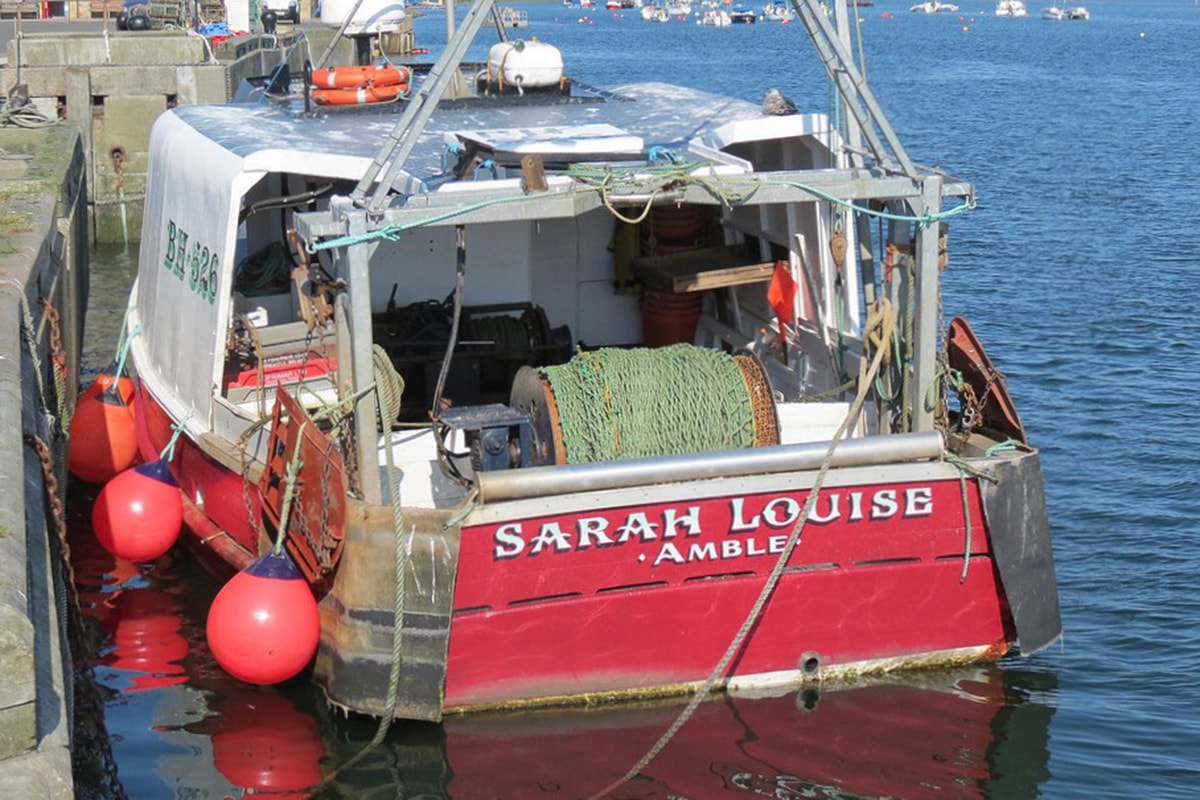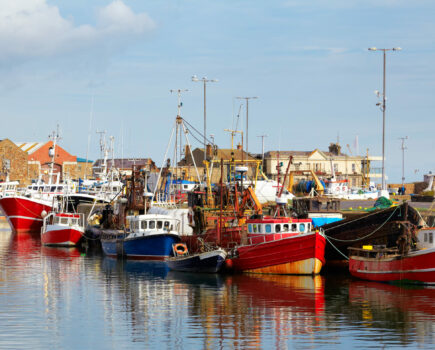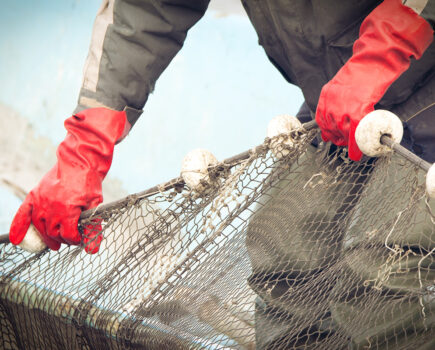A two-year project road-testing selective trawls in the North East England Nephrops fishery put skippers firmly in the driving seat

By Samantha Stott and Tom Catchpole
When it comes to fishing, catching what you want while avoiding what you don’t is the name of the game. Improving the selectivity of fishing gear is one of the most effective ways to achieve this. It cuts down on the time and costs of dealing with unwanted catch, increases the quality and value of the catch, and improves the long-term sustainability of the fishery.
However, making the switch to more selective gear can feel like a risky move. After investing in a new trawl design, there is a chance that it is not up to the task – or it might take time to get it fishing right, be more complicated to operate, or lead to a loss in marketable catches. To overcome these hurdles, a new approach has been developed by a group of skippers in the North East English Nephrops trawl fishery.
Eight skippers created a project with Cefas, with input from Seafish and Boris Nets, to ‘road-test’ a variety of trawl designs, chosen from a ‘showroom’ of designs that have already shown promise in reducing unwanted catches in previous scientific trials. This wasn’t just a quick trial – the skippers tested the gear during real commercial fishing operations over two years under a full range of conditions, giving them plenty of time to get a feel for how these trawls performed in the waters they know best.

The Amble-based vessel Sarah Louise was one of those that participated in the project. Skipper Brian Douglas said: “We are still using our net, and hardly see any roundfish. I think any boats that do target prawns should work coverless nets, but some boats probably rely on the few fish they get when there’s not many prawns about.”
The designs chosen and tested by the skippers included coverless trawls, separator trawls and trawls with large escape panels. What made this study stand out was that it was skipper-led, with the focus on the practical and commercial performance of the trawls.
The skippers adapted and fine-tuned the designs to tailor them to their vessel, and recorded information about how their trawl performed. This data was used to support feedback from skippers on how effective the new designs were at reducing unwanted catch. Seven out of eight skippers reported that they had less unwanted catch with the new trawl designs, mostly reducing catches of unwanted haddock and whiting.
The study was a great example of how collaboration between fishers and researchers can produce practical, real-world solutions. By putting skippers in the driver’s seat, the study ensured that the gear was tested by those who will use it, making sure more selective trawl designs are right for their vessels, and increasing the likelihood that they get used in the future. All the skippers involved want to continue to use their new trawls, although one of the designs, a separator trawl, will require a dispensation to use it, as it does not conform with existing regulations.

Shooting away the twin codend trawl – skippers reported that working the two codends was straightforward, and
that the quality of both prawns and whitefish that were separated out into the two trawls was greatly improved.
Jonathan Jordan, who trialled the twin codend design on his vessel Freedom SSS 1, said: “The separator trawl started off with promising results of separating the whiting and the haddock into the top codend. We tried a few alterations when working with this net, and managed to get around 80% of the whiting and haddock in the top, leaving only 20% in the bottom codend with prawns and prime groundfish.”
He added: “The reason for trialling this was to eliminate the bycatch of whiting and haddock, as when there is no market value or quota, the top codend could be left open. One thing we noticed was fish quality was impeccable in the top codend, without prawns amongst them.
“I would like to thank Cefas for giving me the opportunity to trial this net design, and hopefully, we will get the chance to work together in the future to progress further on new ideas for the net design.”
Graeme McDonagh of the Tara M SN 5 noted: “There was great communication between the Cefas team and the boats. I mainly used WhatsApp to send photos to show the coverless net had less discards than the standard nets.”
Mark Olone, skipper of the Zarlanda B 83, said: “We plan to get all our nets used in North Shields with this 300mm square mesh. It seems rather important now since there is so much fish on the ground that has no monetary value to us, so it would be better if we could cut that out.”
Colin Graham, who operates the Stella Maris SN 101, said: “The project served well, allowing the fishermen to make slight alterations to the fishing nets to reduce the bycatch, and the statistics show slight modifications are just as successful as flip panels and a dual codend.”
In the end, it’s all about finding a solution that works to make fishing more efficient and sustainable, and this study brought us one step closer to that goal. By giving skippers the chance to develop and test new gear, we’re moving towards a future where fishers can keep what they want and leave the rest behind – for the health of both the industry and the ocean.

Cefas researchers Samantha Stott and Tom Catchpole have been evaluating the data provided by the skippers in the project.
After Cefas had been involved in science-focused gear trials, another step was needed to help fishers apply that knowledge. Together we have shown that the barriers to taking up more selective gear can be overcome by removing some of the risks, and giving skippers the opportunity to choose and tailor fishing gear to meet their own needs.
The project was funded by Defra under the Fisheries Industry Science Partnership. Thanks to all the partners in the project – Colin Graham, Jonathan Jordan, David Armstrong, Brian Douglas, Kris Johnson, Peter Clark, Graeme McDonagh, Mark Olone, David Warwick, James Lamb and John Howard – and Cefas colleagues Imogen Dent and Jemma Groom.
This story was taken from the latest issue of Fishing News. For more up-to-date and in-depth reports on the UK and Irish commercial fishing sector, subscribe to Fishing News here or buy the latest single issue for just £3.50 here.
Sign up to Fishing News’ FREE e-newsletter here.








